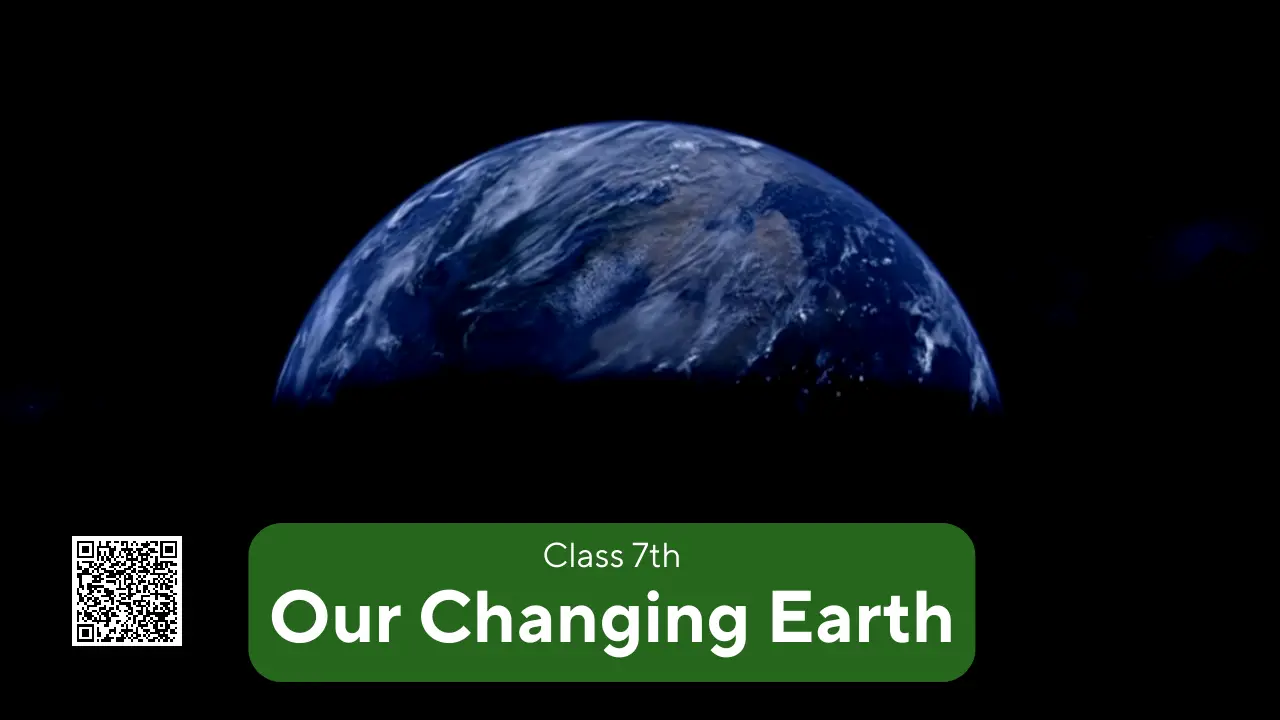
NCERT Solutions for Class 7 Social Science Chapter 3 Our Changing Earth

Q 1. Answer the following questions.
(i) Why do the plates move?
Answer: The movement of molten magma inside the earth results in the movement of plates.
(ii) What are exogenic and endogenic forces?
Answer: The movement of the Earth is divided on the basis of the forces which cause them. The forces that act in the interior of the earth are called endogenic forces, and the forces that work on the surface of the earth are called exogenic forces.
(iii) What is erosion?
Answer: Erosion is defined as the wearing away of the landscape by different agents like water, wind and ice. The process of erosion and deposition creates different landforms on the surface of the earth.
(iv) How are floodplains formed?
Answer: When a river overflows its banks, it results in the flooding of the area surrounding it. When it floods, it deposits a layer of fine soil and other material called sediments, thus forming a fertile layer of soil called flood plains.
(v) What are sand dunes?
Answer: When the wind blows, it lifts and transports sand from one place to another. When the wind stops blowing, the sand falls and gets deposited in the low hill-like structures. These are called sand dunes. They are mostly found in desert areas.
(vi) How are beaches formed?
Answer: The sea waves deposit sediments along the seashores. This results in the formation of beaches.
(vii) What are the oxbow lakes?
Answer: When the river enters the plains, it twists and turns forming large bends known as meanders. In due course of time, the meander loops start to cut off the river and form cut-off lakes, known as the oxbow lakes.
NCERT Solutions for Class 7 Social Science Chapter 2 – Inside Our Earth
Q 2. Tick the correct answer.
(i) Which is not an erosional feature of sea waves?
(a) Cliff
(b) Beach
(c) Sea cave
Answer: b
(ii) The depositional feature of a glacier is:
(a) Floodplain
(b) Beach
(c) Moraine
Answer: c
(iii) Which is caused by the sudden movements of the earth?
(a) Volcano
(b) Folding
(c) Floodplain
Answer: a
(iv) Mushroom rocks are found in:
(a) Deserts
(b) River valleys
(c) Glaciers
Answer: a
(v) Oxbow lakes are found in:
(a) Glaciers
(b) River valleys
(c) Deserts
Answer: b
Q 3. Match the following.
| (i) Glacier | (a) Sea shore |
| (ii) Meanders | (b) Mushroom rock |
| (iii) Beach | (c) River of ice |
| (iv) Sand dunes | (d) Rivers |
| (v) Waterfall | (e) Vibrations of earth |
| (vi) Earthquake | (f) Sea cliff |
| (g) Hard bedrock | |
| (h) Deserts |
Answer:
| (i) Glacier | (c) River of ice |
| (ii) Meanders | (d) Rivers |
| (iii) Beach | (a) Sea shore |
| (iv) Sand dunes | (h) Deserts |
| (v) Waterfall | (g) Hard bedrock |
| (vi) Earthquake | (e) Vibrations of earth |
4. Give reasons.
(i) Some rocks have the shape of a mushroom.
Answer: Some rocks have the shape of a mushroom because, in deserts, wind erodes the lower section of the rock more than the upper section, which makes the base of the rock narrow and the upper part wide, giving it the shape of a mushroom.
(ii) Flood plains are very fertile.
Answer: Flood plains are very fertile because at times when river water overflows, it results in the flooding of the neighbouring areas. This deposits a layer of fine soil and other sediments on the banks of the river, which leads to fertile flood plains.
THE NATURE CONSERVANCY: NURTURING A SUSTAINABLE FUTURE
(iii) Sea caves are turned into stacks.
Answer: When the cavities in the sea caves become bigger and bigger, only the roof of the caves are left, which forms sea arches. Further, due to erosion, the roof vanishes and only the walls stay intact, turning the sea caves into stacks.
(iv) Buildings collapse due to earthquakes.
Answer: When the lithospheric plates move, the surface of the earth vibrates and then these vibrations travel outwards from the epicentre in the form of waves, which leads to sudden movement and results in the collapse of buildings.
Tag:Class 7th, Social Science



